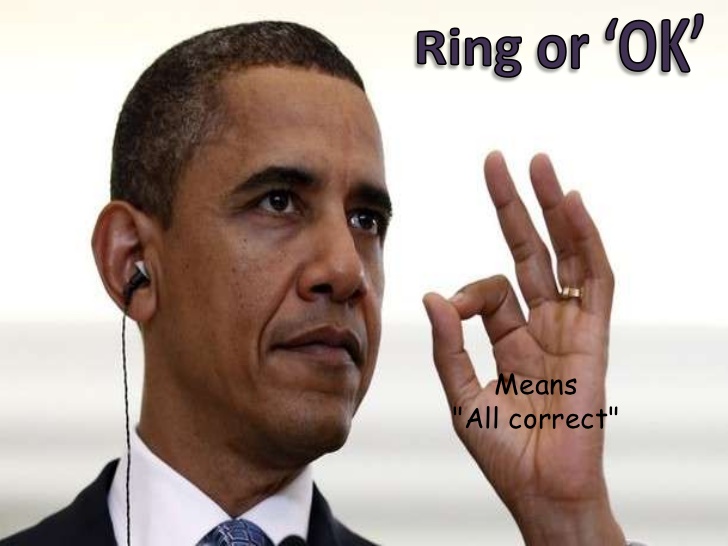There’s a two-letter word that we hear everywhere. OK.
我们随处都能听到一个由两个字母组成的单词。这个单词就是“OK(好的)”。
Okay. OK, are you OK Annie? OK OK OK, OK ladies…
OK. OK。你OK吗,安妮?OK OK OK,OK,女士们......
OK might be the most recognizable word on the planet.
“OK”可能是这个星球上最容易识别的词。
OK! OK.
OK! OK.
It’s essential to how we communicate with each other, and even with our technology.
它对我们和他人沟通,甚至和科技产品的沟通至关重要。
Alexa, turn off the living room light. OK.
Alexa,关掉客厅的灯。OK。
You probably use it every day – even if you don’t notice it.
您可能每天都在使用这个单词 - 即便你可能并没有注意到这一点。
But, what does OK actually mean?
然而,问题是,“OK”这个单词究竟是什么意思呢?
And where did it come from?
这个单词又是从哪里来的?
Hm. OK. Okay then. OK, thank you.
嗯。OK。那OK。OK,谢谢。
OK actually traces back to an 1830s fad of intentionally misspelling abbreviations.
这个词其实可以追溯到19世纪30年代人们故意拼错错写词的风尚。
Young "intellectual" types in Boston delighted those "in the know" with butchered coded messages
波士顿的年轻“知识分子” 喜欢用打乱的编码信息来取悦那些“消息灵通”的人,
such as KC, or "knuff ced", KY, "know yuse," and OW, "oll wright." Haha.
比如KC是“knuff ced”的缩写,KY是“know yuse”,OW是“oll wright”的缩写。哈哈哈。
But thanks to a couple of lucky breaks, one abbreviation rose above the rest: OK, or "oll korrect."
然而,由于运气好,其中一个缩写词从中脱颖而出了,这个词就是“OK”,也即“oll korrect(全部正确)”的缩写。
In the early 1800s, "oll correct" was a common phrase used to confirm that everything was in order.
在19世纪早期,人们常用“oll correct”来表达一切顺利。
Its abbreviated cousin started going mainstream on March 23, 1839, when OK was first published in the Boston Morning Post.
它的缩写形式“OK”是从1839年3月23日,也就是它首次登上《波士顿早报》那天开始进入主流社会的。
Soon other papers picked up on the joke and spread it around the country,
不久,其他文章也开始跟风,让这个玩笑一下子传到了全国各地,
until OK was something everyone knew about, not just a few Boston insiders.
终于,“OK”已经不再是波士顿少数消息灵通的人才知道的词语,而成了每个人都知道的一个词了。
And OK’s newfound popularity even prompted a flailing US president from Kinderhook, New York, to adopt it as a nickname during his 1840 reelection campaign.
“OK”这个词获得了新的人气,来自纽约肯德胡克镇的一位美国总统甚至还在1840年的连任竞选期间把“OK”当成了自己的绰号。
Van Buren’s supporters formed OK Clubs all over the country, and their message was pretty clear: Old Kinderhook was "oll korrect."
范布伦的支持者在全国范围内组建“OK俱乐部”,他们的信息非常明确:肯德胡克的老伙计“一切都好”。
The campaign was highly publicized and turned pretty nasty in the press.
这一活动被媒体广泛宣传,最终却落了个十分讨厌的下场。
His opponents ended up turning the abbreviation around on him, saying it stood for "Orful Konspiracy" or "Orful Katastrophe" Hah.
他的对手们拿这个缩写说事,说它代表“Orful Konspiracy(可怕的阴谋)”或“Orful Katastrophe(可怕的灾难)。”哈。
In the end, even a clever nickname didn’t save Van Buren’s presidency.
最后,即便范布伦取了一个聪明的绰号,也还是没能挽救他的总统职位。
But it was a win for OK.
但对“OK”这个词来说,这却是一次胜利。
That 1840 presidential campaign firmly established OK in the American vernacular.
1840年的总统竞选活动牢固地确立了“OK”在美国口语中地位。
And while similar abbreviations fell out of fashion,
虽然类似的缩写已经变得不再流行,
OK made the crossover from slang into legitimate, functional use thanks to one invention: the telegraph.
OK却从俚语转而具有了合法,功能性的用途。而这一切都要归功于一种发明:电报。
If we lower the bridge, the current flows to the sounder.
如果我们按下电桥的一端,电流就会流向发声器。
At the other end, the current energizes an electromagnet and this attracts the armature.
在另一端,电流激励电磁铁,将电枢吸附过来。
The armature clicks down against a screw and taps out a message.
电枢往下触到螺丝,消息就发出去了。
The telegraph debuted in 1844, just five years after OK.
电报是1844年面世的,距离“OK”这个词被创造出来仅仅五年时间。
It transmitted short messages in the form of electric pulses, with combinations of dots and dashes representing letters of the alphabet.
电报以电脉冲的形式传输短信息,用的是点和短划线的组合来代表字母表里的字母。
This was OK’s moment to shine.
“OK”一展宏图的时候到了。
The two letters were easy to tap out and very unlikely to be confused with anything else.
这两个字母打起来很容易,也不太可能与其他任何字母混淆。
It was quickly adopted as a standard acknowledgement of a transmission received, especially by operators on the expanding US railroad.
它也很快被采纳为收到信息的标准确认方式,当时正在扩建美国铁路的运营商尤其爱用这个词。
This telegraphic manual from 1865 even goes as far as to say that "no message is ever regarded as transmitted until the office receiving it gives O K."
这本1865年的电报手册甚至还规定“任何消息都无能视为已传送成功,除非收到接收方发送回来OK一词。”
OK had become serious business.
可见,“OK”已经变成了一个十分严肃的词。

But there’s another big reason the two letters stuck around, and it’s not just because they’re easy to communicate.
然而,这两个字母之所以能延用下来还有一个重要原因,这个原因不仅跟这个单词沟通起来很容易有关,
It has to do with how OK looks. Or more specifically, how the letter K looks and sounds.
也跟这个单词的长相有关。更具体地说,是跟字母K的长相和语音有关。
It’s really uncommon to start a word with the letter K in English — it’s ranked around 22nd in the alphabet.
英语单词以K开头的情况实属少见 - 毕竟,它已经排在了字母表的第22位。
That rarity spurred a "Kraze for K" at the turn of the century in advertising and print, where companies replaced hard Cs with Ks in order to Katch your eye.
这种稀有性还在世纪之交的广告和印刷行业掀起了一股“迷K潮”,各企业纷纷用K来代替硬挺的C来吸引大家的眼球。
The idea was that modifying a word — like Klearflax Linen Rugs or this Kook-Rite Stove, for example — would draw more attention to it.
企业家们的想法是对一个单词加以修饰 - 比如Klearflax亚麻地毯或者这个Kook-Rite灶--会让它更具吸引力。
And that’s still a visual strategy:
这也是一个视觉策略:
We see K represented in modern corporate logos, like Krispy-Kreme and Kool-Aid.
我们看到一些现代企业也会在他们的商标里用到K这个字母,如Krispy-Kreme,Kool-Aid。
It’s the K that makes it so memorable.
这些商标之所以让人过目不忘,就是因为有“K”这个字母在里面。
By the 1890s, OK’s Bostonian origins were already mostly forgotten,
到19世纪90年代,“OK”一词诞生于波士顿一事已经很大程度上被大家遗忘了,
and newspapers began to debate its history — often perpetuating myths in the process that some people still believe.
于是,各大报纸便开始辩论它的历史 - 过程中通常会编一些能长久流传的传说,有些传说有些人现在都还信以为真。
Like the claim that it comes from the Choctaw word ‘okeh,’ which means ‘so it is.’
比如,有人说它来源于乔克托语里的“okeh”一词,意思是“就是这样”。
Choctaw gave us the word OK…
乔克托语为我们贡献了“OK”这个词......
OK’s beginnings had become obscure, but it didn’t really matter anymore — the word was embedded in our language.
“OK”一词的来源已经变得模糊不清,但这已经不重要了 - 因为它已经深深地扎根在我们的语言里了。
Today, we use it as the ultimate "neutral affirmative."
今天,我们用这个词来表示最后的“中立肯定”。
OK then.
那好吧。
Okay then.
好吧。
Learn to truly love yourself. OK.
学会真正的自爱。好的。
OK. Get yourself up here! OK!
好。勇敢地站起来!好!
I don’t know what to say.
我不知道该说些什么。
Say OK. OK.
那就说OK。OK。
It’s settled then!
这不就解决了嘛!
Allan Metcalf wrote the definitive history of OK, and he explains that the word "affirms without evaluating,"
艾伦·梅特卡写了OK的确切历史,他解释说这个词的意思是“未经评估就肯定,”
meaning it doesn’t convey any feelings — it just acknowledges and accepts information.
意思就是它不传达任何感情 - 只表达了对信息的承认和接受。
If you "got home OK," it just means you were unharmed.
如果你“很OK地到了家”,那就意味着你没有受到伤害。
If your "food was OK," then it was acceptable.
如果你的“食物还OK”,就说明还不算难吃。
And "OK" confirms a change of plans.
“OK”也是对计划变更的确认。
It’s is sort of a reflex at this point — we don’t even keep track of how much we use it.
在这一点上它可以说是一种反射 - 我们甚至没去记我们用这个词用了多少次。
Which might be why OK was arguably the first word spoken when humans landed on the moon.
这可能就是为什么OK可以说是人类登月球后所说的第一个词。
"Thirty seconds."
“还有三十秒。”
"Contact light."
“有不明光源。”
"Ok. Engine stop."
“好的。发动机已经停止运转。”
"We copy you down, Eagle."
“收到,老鹰。”
Not bad for a corny joke from the 1830s.
一个19世纪30年代老生常谈的笑话能有今天已经很不错了。
Alright guys, cut it out.
好了,伙计们,咔了吧。


